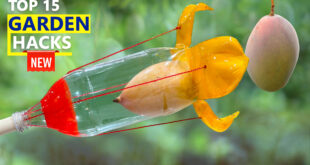In today’s post, we will explore 10 common and potentially fatal mistakes to avoid when growing succulents and cacti, along with some useful lifesaver solutions to tackle these problems.
1. Overwatering:
One of the most common mistakes in growing succulents and cacti is overwatering. Succulent plants are drought tolerant and store water in their leaves, stems, and roots. Overwatering can lead to root rot, a condition that can be really fatal and kill the plant. Another mistake most newbie gardeners tend to make is drench the succulents while watering. This can result in fungal rot due to excessive moisture. Best watering can to use for watering succulents is a long nozzle can to water only the soil and not the leaves.
How to Avoid:
– Remember to Water only when the soil is completely dry. You can either use the finger dip method to check the top inch of the soil before watering or use a moisture meter if you have.
– Make sure the drainage holes are patent to prevent water from accumulating.
– In the dormant season, reduce the frequency of watering.
– Generally watering once in a week is sufficient for all succulents and of course this depends on the climate of the zone you live in.
2. Using the Wrong Soil:
Succulents and cacti require well-draining soil to prevent root rot. Regular garden soil or potting mix retains too much moisture, which can be detrimental to these plants.
How to Avoid:
– Use a cactus or succulent-specific potting mix.
– Create your own mix by combining regular potting soil with sand, pebbles, perlite, or pumice to improve drainage. Do not use watering retaining stuff like vermiculite or coco peat. One recipe i use frequently is: 30 to 40% of Garden Soil, 30 to 40% Sand, 10% to 20% pebbles or some small coarse rocks or pumice or perlite if available, 10 to 20% Compost like cowdung or vermicompost, Optionally you can add some 10% Charcoal – small pieces. This fast-draining soil is actually a lifesaver for succulents during the raining season, especially young plants or those that are recently transplanted.
3. Inadequate Sunlight:
Succulents and cacti need plenty of light to thrive. While some can tolerate low light conditions, most will suffer without adequate sunlight, leading to etiolation, where the plant stretches and becomes leggy.
How to Avoid:
– Place your plants in a spot where they receive at least four to six hours of direct sunlight daily.
– Rotate the plants periodically to ensure even light distribution.
4. Incorrect Temperature:
Succulents and cacti are generally tolerant of a wide range of temperatures, but extreme cold or heat can be harmful. Frost can damage or kill these plants, while excessive heat can lead to sunburn and dehydration.
How to Avoid:
– Protect them from frost by bringing them indoors or covering them during cold snaps.
– Provide shade using 50% green shade net during the hottest parts of the day in summer.
5. Ignoring Pests:
While succulents and cacti are generally resistant to pests, they are not immune. Common pests include mealybugs, spider mites, and scale insects, which can weaken the plants and lead to further problems.
How to Avoid:
– Regularly inspect your plants for signs of pests.
– Isolate infested plants to prevent the spread of pests to other plants.
– Use insecticidal soap or neem oil spray to treat infestations. About 5 to 10 ml neem oil per litre of water for spraying.
6. Improper Container Size:
The size of the container can significantly impact the health of succulents and cacti. Too large or deeper containers can lead to excess soil retaining moisture, while too small a pot can restrict root growth.
How to Avoid:
– Choose a pot that is proportionate to the size of the plant. For most succulents we recommend a wider shallow container for best results, because a wider container with enough space will help in propagation of succulents which produce offsets or babies from sides, which can be separated and grown as independent plants.
– Ensure the pot has adequate drainage holes.
– Repot when the plant outgrows its current container, usually every two to three years.
7. Over-fertilizing:
Succulents and cacti have low nutrient requirements. Over-fertilizing can lead to rapid, weak growth and can damage the roots.
How to Avoid:
– Fertilize sparingly, usually once or twice during the growing season or you can fertilize once in 3 months which is more than sufficient.
– Use a balanced mild fertilizer like a handful of Cowdung fertilizer or vermicompost once in a while which is generally sufficient.
8. Improper Pruning:
While succulents and cacti don’t require frequent pruning, removing dead or damaged parts can help the plant focus its energy on healthy growth. However, improper pruning practices can harm the plant.
How to Avoid:
– Use clean, sharp tools to make precise cuts.
– Prune during the plant’s active growing season.
– Remove only dead or diseased parts unless shaping is necessary.
“And there you have it! By avoiding these common mistakes, you’ll be well on your way to growing happy, healthy succulents and cacti.”
Tags adenium ALOE VERA cacti crassula garden garden mistakes gardening gardening for beginners gardening mistakes home garden horticulture how to grow succulents how to water succulents indoor succulents kalanchoe propagating succulents succulent succulent care succulent care for beginners succulent care tips succulent garden succulent mistakes succulent plant succulent plant care succulent plants succulent plants propagation succulent potting mix succulent soil mix succulent tips succulents types of succulents
Check Also
15 HOUSEHOLD GARDEN HACKS THAT ACTUALLY WORK
In Today’s post, let us look into 15 household items and their miraculous uses for …
 GKVKs – Gardening Tips and Store Gardening Tips and Store
GKVKs – Gardening Tips and Store Gardening Tips and Store


